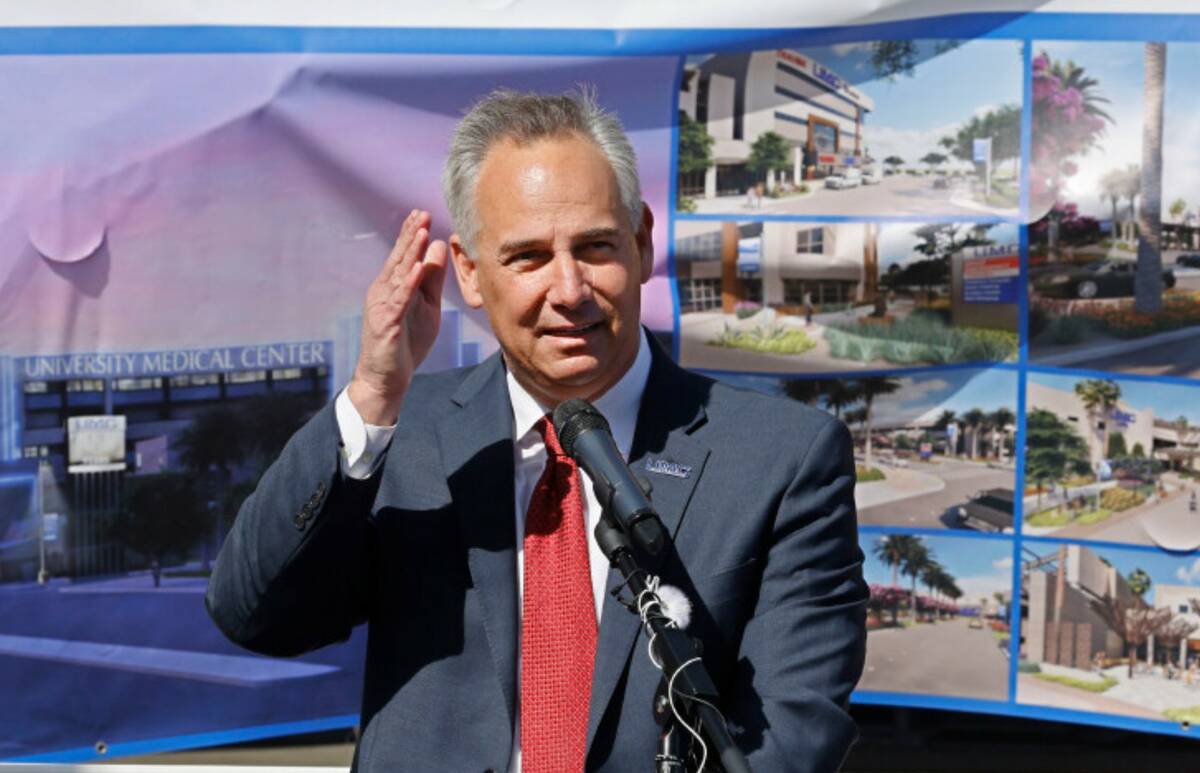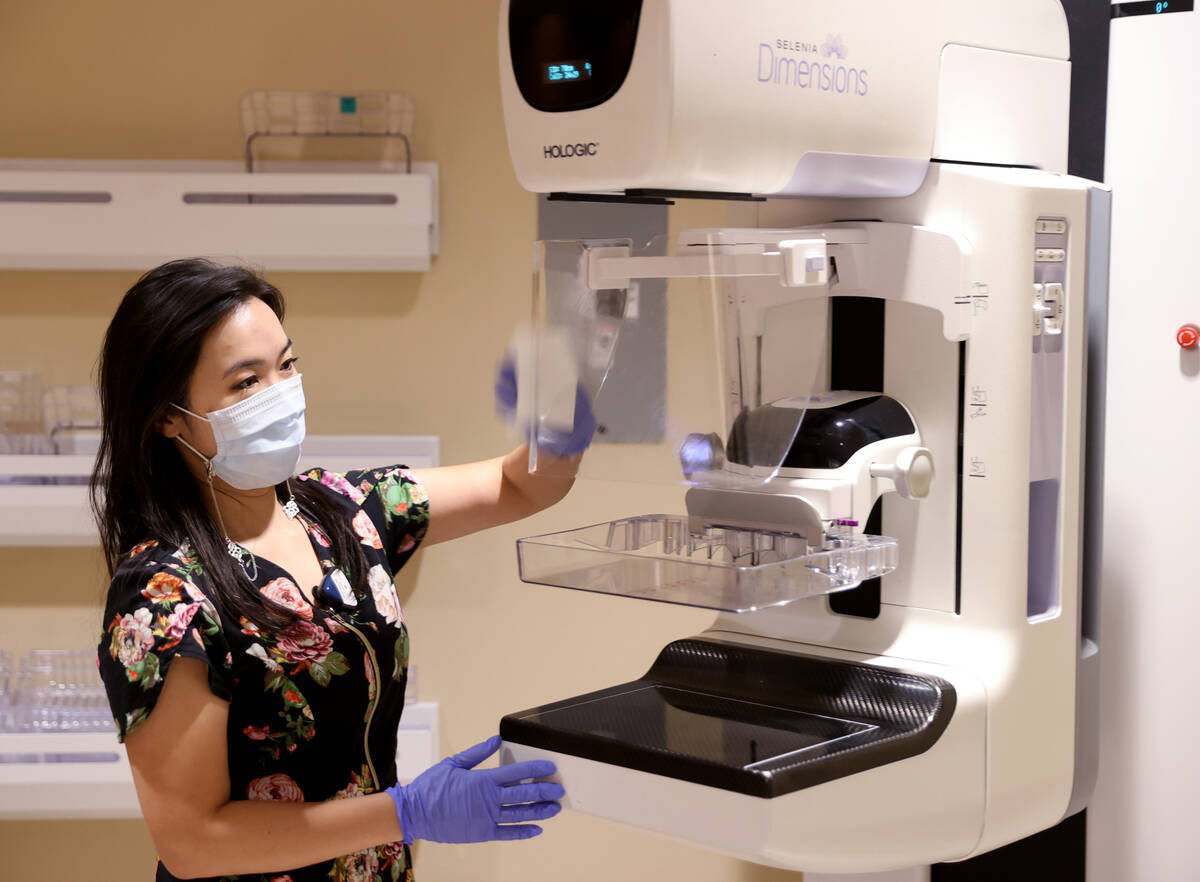‘I wish there was better health care here’: Radiology changes magnify doctor shortage
Las Vegas resident Colleen Brola tried to schedule a mammogram in May at a nearby Desert Radiology, but the first available appointment was not until October. She later found one for July on the other side of town.
Luckily, through her insurance she was able to get a free mammogram at Southwest Medical even earlier. After being diagnosed with cancer in 2015, she has had to travel to California on a few occasions for treatment.
“I wish there was better health care here, but I don’t see a lot of incentive to get them to stay,” Brola said.
Brola and other Las Vegas residents could have a harder time booking appointments with radiologists because of ongoing changes with Desert Radiology, one of the state’s largest radiology practices, in a community already affected by a doctor shortage.
University Medical Center has been a partner with Desert Radiology for about 57 years, said Mason Van Houweling, the county hospital’s CEO. In June, however, Desert Radiology abruptly notified the hospital that it was terminating their agreement, effective Dec. 3.
Desert Radiology performs and reads a significant number of exams at UMC. Each year, it performs about 73,000 diagnostic radiology exams, such as chest X-rays, for the medical center; 73,000 CT scans; 30,000 ultrasounds; 8,700 MRIs; 3,700 special procedure exams and more, Van Houweling said.
“We recognize the severity of this and the situation and the impact of all those patients,” Van Houweling said. “Our team at UMC is working overtime to make sure that, really, our community maintains the highest quality access to radiology services.”
The nonprofit public hospital is creating an in-house team of 18 to 20 radiologists to offset the termination of Desert Radiology’s contract, he said.
Doctors leaving
Other changes that could negatively impact the health care system are ongoing at Desert Radiology, Van Houweling said.
Desert Radiology, a local radiology practice founded in 1966, was bought by a venture capital and private equity firm called Radiology Partners five years ago. The contracts the doctors signed after the purchase are expiring, and many doctors are deciding whether to stay, Van Houweling said.
In a statement to the Las Vegas Review-Journal, Desert Radiology said it is continuing its internal contract renewal process with radiologists, so “notifications of upcoming retirements and attrition are both normal and expected.”
“The DR team looks forward to welcoming several new radiologists into the practice over the coming months and together providing excellent care to our patients for many more decades to come,” Desert Radiology said.
Desert Radiology declined to tell the Review-Journal the specific number of doctors who are leaving. The Review-Journal also reached out to several radiologists at Desert Radiology who all declined to comment.
Van Houweling does not know the exact number of people leaving the practice, but it is significant, he said. The doctors who are leaving, however, have limited options, Van Houweling said.
He said Desert Radiology employees sign non-compete agreements, which prohibit them from working for another company in the community or in a certain radius for upward of five years, further exacerbating the existing shortage of radiologists because many are over the age of 50 and are retiring.
“If they don’t want to work for them, they can’t work in the community,” he said. “They have to leave a certain radius, which would include Las Vegas for the most part.”
The provider shortage
Nevada’s doctor shortage is not a new, or unknown problem. It also is not unique to Nevada. Many states are facing a shortage, and a 2020 study published in the National Library of Medicine found that it likely will get worse over the next 10 years.
The study found that the West is expected to have the greatest physician shortage ratio — about 69 physician jobs per 100,000 people — while the Northeast will have a surplus of 50 jobs per 100,000 people.
Dr. Marc Kahn, the dean of the Kirk Kerkorian School of Medicine and vice president of health affairs for UNLV, said Nevada ranks near the bottom for physicians per capita.
“As a state we are woefully undersupported in funding for residencies,” Kahn said.
Nevada has about 403 federally funded positions, compared with more than 9,000 in California and nearly 17,000 in New York, he said.
Easing the shortage
Both state and federal legislators have tried to find solutions to ease the doctor shortage in Nevada.
State Sen. Robin Titus, R-Wellington, introduced legislation in the last session that aimed to alleviate Nevada’s shortage by diverting up to $4 million from the state’s general fund to hospitals seeking to set up residency programs. That bill did not pass. However, Titus will work to bring similar legislation to the next session in order to create sustainable funding, Titus told the Review-Journal on Tuesday.
The Legislature did pass a few bills this session, including one that creates a fund to pay back medical loans for providers working in underserved communities and another that established a graduate medical education grant program. On the flipside, the Legislature passed a bill that increases the cap on awards for pain and suffering in medical malpractice cases, which doctors warned would intensify the doctor shortage.
At the federal level, Sen. Jacky Rosen, D-Nev., helped introduce the Medical Student Education Authorization Act of 2023 in May, which would expand the Medical Student Education Program and provide federal grants to support graduate education for physicians in states with the worst provider shortages. In March, she introduced a package of bills aiming to address the doctor shortage across the country and incentivize doctors to practice in areas experiencing a physician shortage.
“As I travel across our state, I hear directly from Nevadans about how the doctor shortage is affecting them and threatening their ability to access quality medical care,” Rosen said in a recent statement to the Review-Journal, adding that she is working to increase the number of practicing physicians in Nevada.
Van Houweling wants to see legislative changes to non-compete agreements so that doctors can more easily stay in their communities to work.
A previous version of this story contained inaccurate information about radiology residencies.
Contact Jessica Hill at jehill@reviewjournal.com. Follow @jess_hillyeah on Twitter.




















